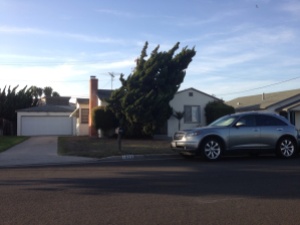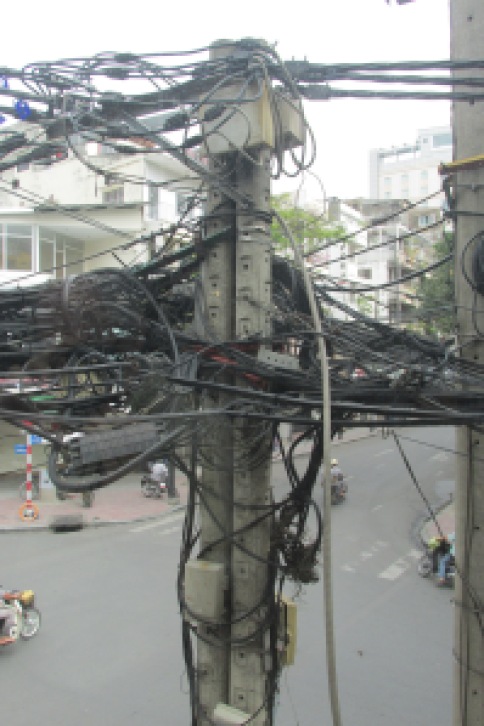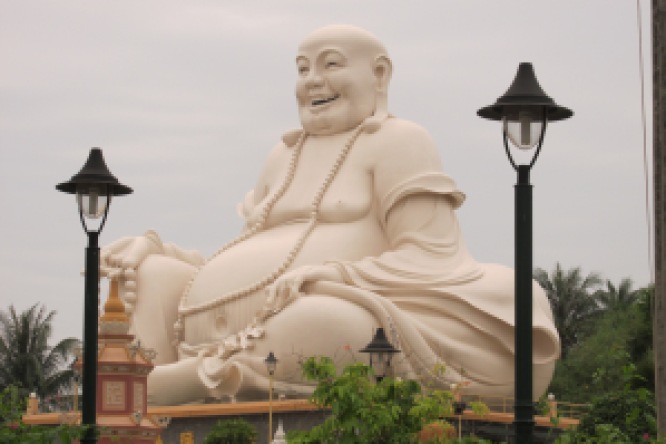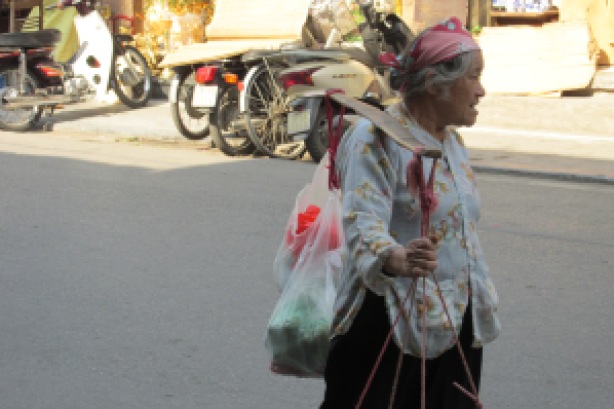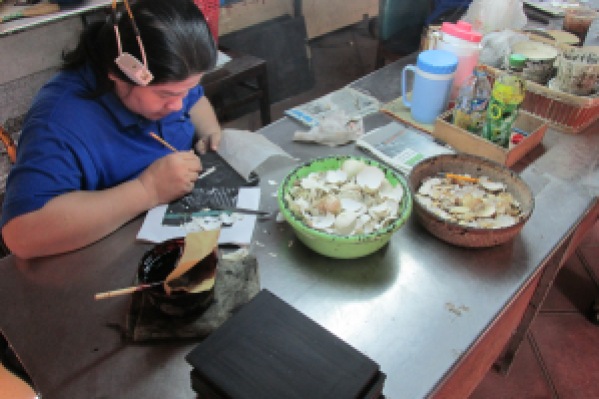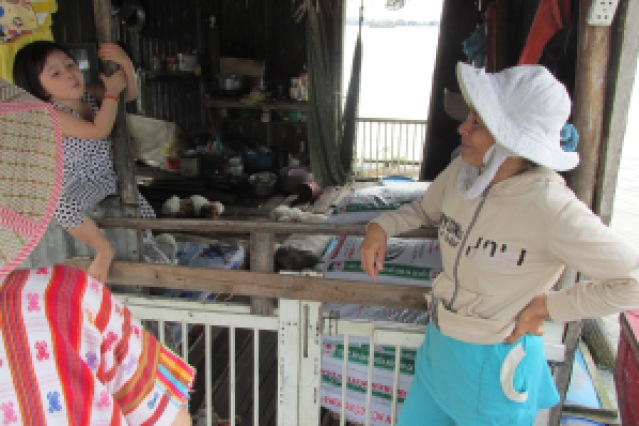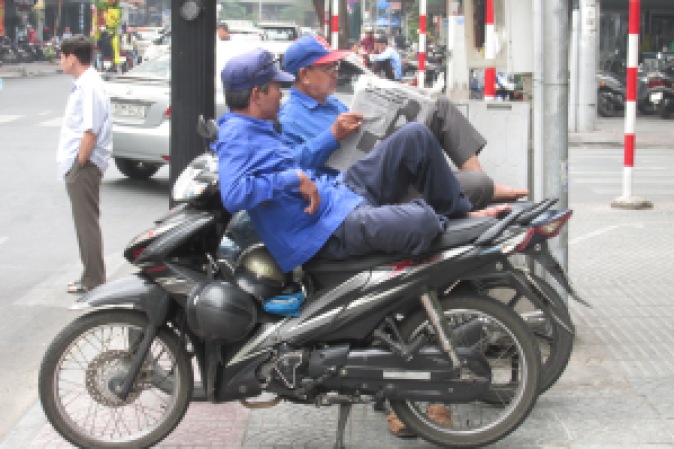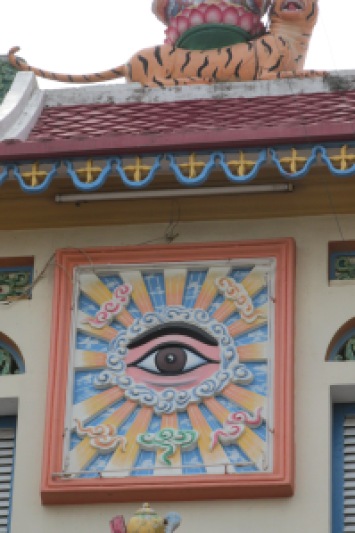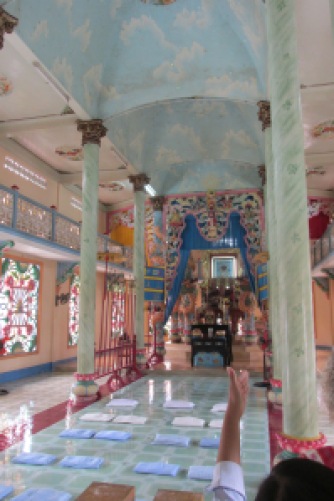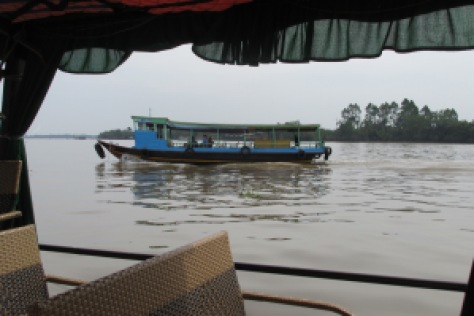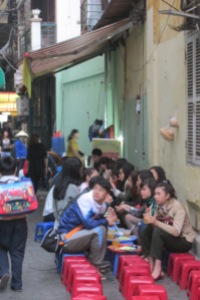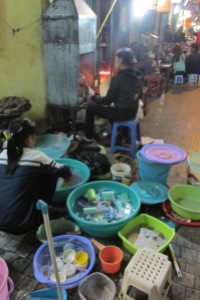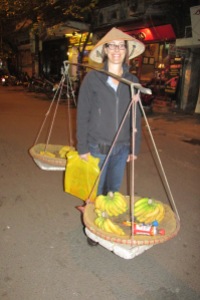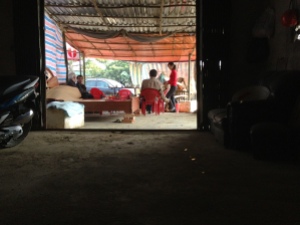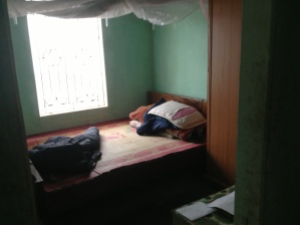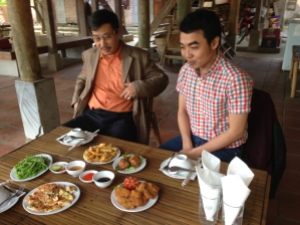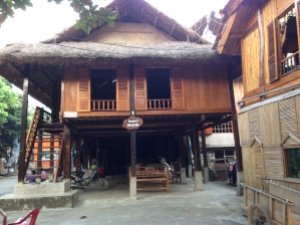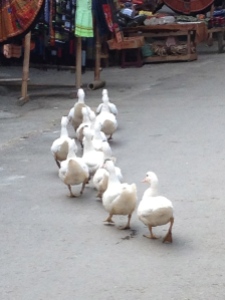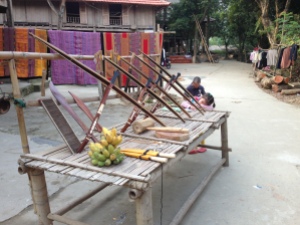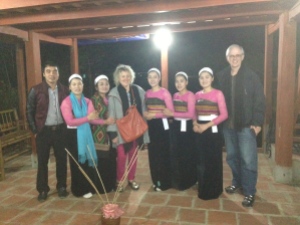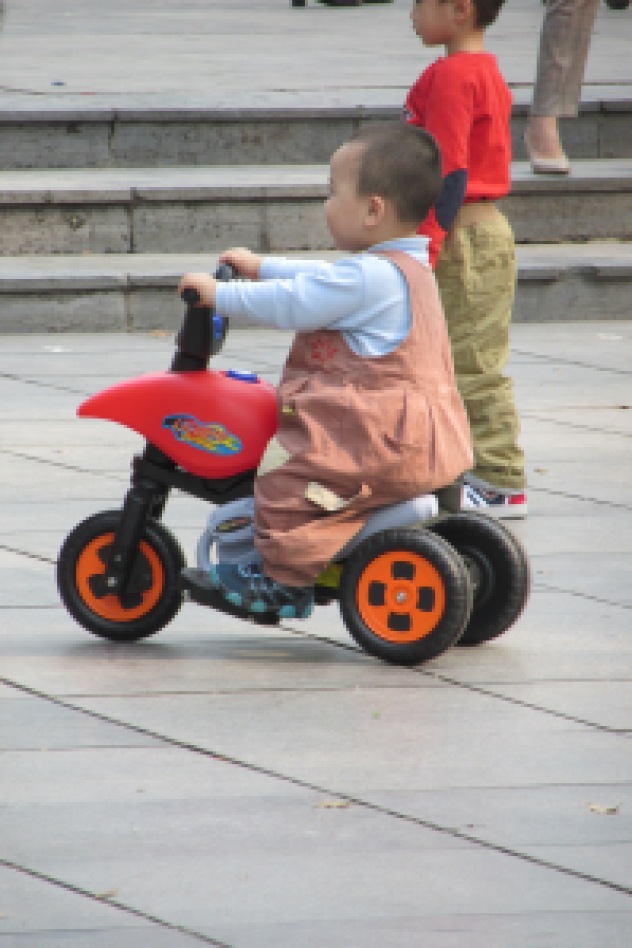The final leg of the trip home from Vietnam took a little over an hour.
I smiled as I unlatched the lock and felt the contrast between my silent home, which sits of the edge of ten acres of open space bounded by a bike path, and the streets of Hanoi and Ho Chi Minh City. In a world where endless streams of Vespa’s roar their mantras through streets bordered by sidewalks that serve as sets where locals live out the daily, I found unbounded space by going within. Now back at home where silence and space have their due, inner and outer seem not so separate and unbounded space much more accessible.
After my partner and I checked the house, the garden and unpacked, I scanned the library for a book. After six weeks on Kindle I yearned for print. Landscapes of the Sacred by Belden Lane caught my attention. I had purchased it long ago when most of my travels were mainly to sites that were called “sacred.” Never got around to reading it. As the title stared up at me it was countered by my thought that all sites or landscapes in Lane’s case, are sacred. Moving right along as thoughts are want to do, I wondered if sacred like beauty, is to be found in the eye of the beholder. Or, is there something qualitative that sets a place apart from others, which marks it as sacred? I went to my wingback chair near the large window on the south side of the house to sort through my thoughts and to do a bit of research, Landscape and computer–my only other companions.
In the past I would have gone to Webster to review the meaning of sacred, but today I resorted to Wikipedia. Sacred…descends from the Latin sacrum…refers to the holy. Reading further I found a section titled “sacred ground” followed by “This section does not contain any references or sources….” Time to move on from Wikipedia.
On the topic of the sacrum Landscapes of the Sacred had more to offer. I was especially taken with a quote Lane took from N. Scott Momoday as quoted from Barry Lopez in Artic Dreams.
“Once in his life a man [or woman] ought to concentrate his mind upon the remembered earth. He ought to give himself up to a particular landscape in his experience, to look at it from as many angles as he can, to wander upon it, to dwell upon it. He ought to imagine that he touches it with his hands at every season and listens to the sounds that are made upon it. He ought to imagine the creatures there and all the faintest motions of the wind. He ought to recollect the glare of the moon and colors of the dawn and dusk.”
On reading the quote I thought of Spider Rock in Canyon de Chelly, Arizona. While it has been more some years since my last visit it will forever remain one of my go-to landscapes. Initially, I had decided to visit the canyon for the same unusual reason that I have chosen to visit a few other places. On a rare occasion the thought of some country, site or body of water explodes in my waking consciousness. It seems to come out of nowhere, no rhyme or reason other than I suddenly think of it and know I have to go. This odd phenomenon spurred my first trip to India, to the island of Kauai and likewise, Spider Rock.
A trip in 1976 to New Mexico initiated my long love affair with the southwest. On that trip I bought my first drum a Taos ceremonial, at the Taos Reservation and brought it back to California. For ten years it sat in the living room in my home softly drumming reminding me of the land from which it came. Following the first trip my partner and I when we could find time, spent the next twenty-five years combing the inches of the four corners—Colorado, Utah, Arizona and New Mexico. In the nineties I split my time between Davis and Santa Fe. I was ecstatic when my in-laws decided to retire in Arizona. Simultaneously, I began spending time among Native Americans and learning their traditions. The canyon to the north, Canyon de Chelly (shay) kept popping up. The name mystified me, sounded like a far-off magical land. I was drawn. And then I went.
Following a day at the Grand Canyon my companion and I steered east and headed toward Tuba City along Highway 160. A few miles past Tuba City we stopped to take a look at the Hopi Villages. I could feel the throbbing energy of the old ones under my feet as we set foot in Oraibi, one of the oldest continuously lived in villages in the US. I felt like I had been drawn to the center of the earth. In the ancient time the Hopi had agreed to be caretakers of the Fourth World this earth, in order to be able to live on it. They renew this agreement annually in ceremony. In Oraibi I noticed signs for ceremony and celebration taking place up on a mesa at that very moment. We got directions from one of the elders and promptly made our way up to the first mesa. We parked half way up the narrow road that led to the village of Polacca then hiked until we reached a large plaza where dance and ceremonies were taking place. In a sea of celebrating Hopi’s two others and we were the only guests. Greeted warmly we were offered food and drink, and given chairs to view the dances. The kachinas played with us. Truly, the ancient ones were giving us their blessing—a preparation for Spider Rock.
I had learned from a native elder that because of my astrology, in native tradition I am a member of turtle clan with bear totem. On leaving the ceremonies we descended the mesa and drove to the Cultural Center where I purchased a ring engraved with a bear paw. I wear it to this day.
At twilight we arrived at Thunder Lodge the only hotel inside Canyon de Chelly National Monument. We checked in and promptly took off to get a glimpse our surroundings, but soon darkness began to descend over the canyon and the only thing that breaks it are the stars. We decided to turn back and wait for morning. A dinner of Navajo taco, green chili stew and fry bread was waiting for us back at the lodge and a basic room took care of our basic needs; more important, we would sleep cuddled in the energy of the canyon land.
Rising at dawn my partner and I stuffed our backpacks with water and snacks and headed out. Slowly, ever so slowly we edged the south rim easing our way through sage and cacti. White House, Sliding House, Face Rock Look Outs, we stopped at all three, but my heart was pounding to get to Spider Rock the last stop and endpoint of the south loop.
The sign read “Spider Rock,” but all I could see was a small parking lot and some large boulders, no view. Another sign read “Don’t leave valuables in the car.” Arrows pointed us toward a narrow winding path. I followed. A gentle breeze softened the intense rays of the morning sun. As I got closer to the outlook vistas of canyon valleys sided by red and green terraced walls began to unfold. Shortly, I rounded a bend, a rock, and there she was! In all her stateliness, magnificence and power: Spider Rock. I stared in disbelief, I gasped in awe. I don’t know how long I remained gaping, taken aback as well as taking in one of the most incredible sites I had witnessed in this lifetime. We recognized and welcomed one another like old lost friends. Had I lived here near her in some past time or life?
When some time passed I do not know how long, the sound of a cowbell from the floor of the valley far below tickled my ears. Later I would learn that in summer some of the Navajos return to the floor of the canyon with their livestock; in winter they return to the nearby town of Chinle. As I came back to ordinary consciousness I remembered that at the lodge the night before a park ranger told me that from the rim above Spider Rock I could shout or sing and anything I said would echo back. First, I shouted greetings. Every word returned sounding like a response from the heart of the universe. I pulled Gregorian chants out of my memory and chanted. The Gloria in Excelsis Deo in echo had never sounded so good. I Om-ed and received in return a score of overtones.
A grey granite, pepper flaked boulder actually two boulders, formed a meditation chair in perfect view of the rock. Now that I think about it, they were just like the granite boulders we installed in the back yard four years ago. My voice weary, I sat down and curled in my legs. My eyes followed the wavy, red sandstone canyons seemingly toward infinity. The soft breeze caressed my arms while a silence so enormous it could only be unbounded space absorbed the entire canyon. I closed my eyes and sat for a long time.
Eventually, as earlier a cowbell began to punctuate the silence. Gradually, I awakened.
I had been called to this sacred place on the Navajo Reservation, but on that day I did not know that it was sacred to anyone except me. We returned to our sunbaked car and drove back to the lodge for a rest.
The following days we rose at dawn went to Spider Rock and meditated, and at noon returned to Thunder Lodge for lunch. We toured the northern rim and late in the afternoon revisited Spider Rock for sunset. The next day we took the daily scheduled valley floor tour in an open truck. The bad news was spending the greater part of two hours bouncing around on hard seats; the good, we stopped at the base of Spider Rock where I could experience her energy from the core.
According to the ancient legends, I was at the home of Spider Woman. It is told that she lived at the base of the two pillars that form Spider Rock and taught the Navajos weaving, so important to their economy. Often weavers honor her by rubbing spider webs on their hands before they work.
At the end of the week I had come to know that I had experienced something precious. It affected me in ways that would not reveal themselves until a few years later. I had to as Momoday advised, give myself up to this landscape, view it from many angles, listen to its sounds, experience its dawn, mid-day and dark. The impact of the first visit was such that I would return in order to come to know her well.
In the summer and early fall the light over the canyon is golden. Thunder and lightning accompany the frequent showers dividing the dark sky like a furious Kali providing moksha for her devotees. Rainbows, cross thread one another forming translucent weavings of loops mimicking dream catchers. Autumn light turns filmy, crispy, blue, and as snow sets in the canyon goes quiet. Winds whistle through red walled chambers singing of the aloneness that arises in solitude. Beauty reins along its articulated spaces and upon her rock Spider Woman stands firm.
On my last visit full of anticipation for what it would bring I made my usual pilgrimage out to the rock. Well into fall, deep in the canyon winds whistled like finely tuned violins. I felt a slight, but pervasive chill. I greeted Spider Woman and sat on my now favorite boulder for a meditation. Hours passed, or so it seemed, it could have been minutes. I don’t know how long he had been there; he made no sound. When I opened my eyes a Navajo sat beside me. He spoke. “You’ve been meditating. Do you come here often?” Surprised, I responded, “As often as I can. And you?” He answered, “Now I do. This is the place for my people. This is where they come and need to come much more.”
We sat together in silence for several minutes. Finally, both of us got up and walked together through the sage and sand back to our cars.
In silence.
The following photos are far better than my snapshots from an earlier time.
www.lovethesepics.com/…/heaven–aka–navajo–nation-canyon-de-chelly-…
